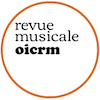-
Vol. 6 nº 2, janvier 2020
The aim of this article is to provide clear evidence of the existence of premeditated mirrored constructions inside Contrapunctus 6 and to investigate the relation of the mirror technique present in Contrapunctus 6 with the rest of work. These inversed and reversed subject expositions (mirror) take place sporadically inside this “earlier” Contrapunctus as far as the ordering issue is concerned. That is because the “mirror” technique is typical for the two later pairs of fugues 12 and 13. In this way, we can acknowledge the fact that Bach interrupted in a way the use of increasing complexity inside the work by introducing a later technical element (the mirror) inside an earlier fugue as we will see in the next pages.
-
Vol. 6 nº 1, juillet 2019
When observing and studying the music of Johann Sebastian Bach, we may find ourselves at an impasse due to the presence of several parallel, but connected, analytical fields. The difficulty of simultaneously processing several of these fields makes it necessary to thoroughly and methodically examine one field before examining another. By analysing multiple facets of the music, we create a bridge of understanding among these apparently heterogeneous fields, which enables us to better comprehend the inner structure of the composition. However, these heterogeneous fields do not always interact with one another in a clear way. Despite the multiple fields of analysis, the composer may choose to focus his or her attention on one or several specific techniques in each piece. In the case of Contrapunctus, these are contrapuntal techniques.
ISSN : 2368-7061
© 2025 OICRM / Tous droits réservés
